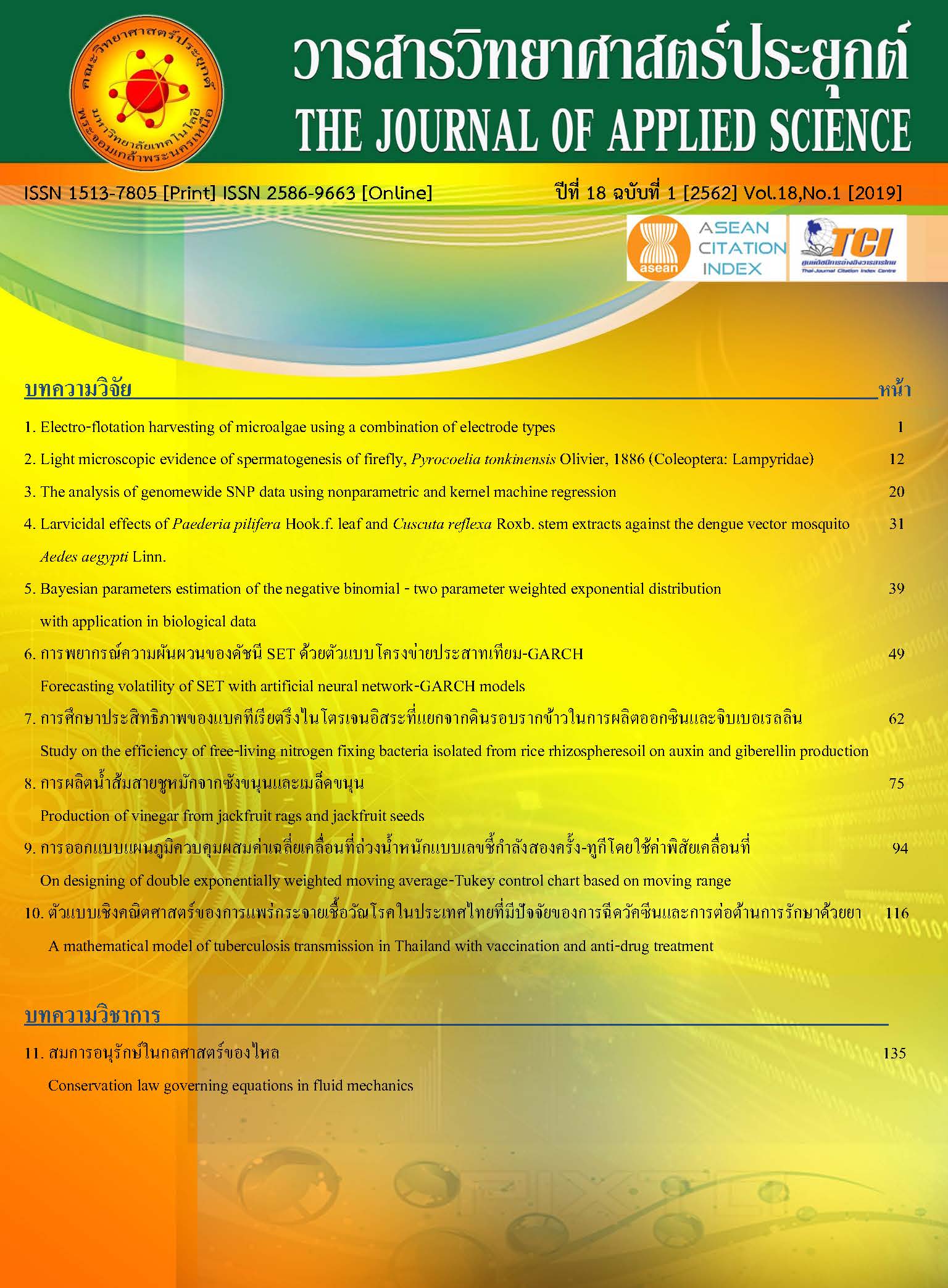Light microscopic evidence of spermatogenesis of firefly, Pyrocoelia tonkinensis Olivier, 1886 (Coleoptera: Lampyridae)
คำสำคัญ:
firefly, histology, reproduction, sperm cell, Thailandบทคัดย่อ
The description of the firefly reproductive structure is relatively under-researched. Therefore, we initially observed the differentiating stages of spermatogenesis in the adult male firefly, Pyrocoelia tonkinensis, which could be the very first report in Thailand. All firefly specimens gathered from Nakhon Si Thammarat province, Thailand, were processed using the standard histological technique. It was divulged that a pair of testicular structure with several sperm tubules was seen. The stage of spermatogonia within testis follicle could be divided into three main zones, namely zone I (growth), zone II (maturation), and zone III (transformation). In this process, each zone contained the differentiating stages of spermatogenesis, which was classified into six stages based on size differences and the histological organization (especially in the chromatin organization) including spermatogonia, primary spermatocytes, secondary spermatocyte, spermatids with two sub-steps, and spermatozoa. The detailed information about male p. tonkinensis reproduction could generate not only a baseline data to be better known but also contribute to the future works regarding ultrastructure and physiology of the reproductive system. This would then be supportive of the conservation and management of the firefly in Thailand.


